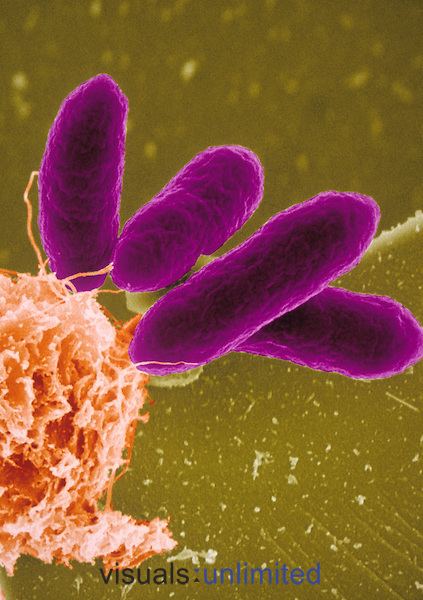Order Enterobacteriales Scientific name Plesiomonas shigelloides Rank Species | Phylum Proteobacteria Higher classification Plesiomonas | |
 | ||
Genus Plesiomonascorrig. Habs and Schubert 1962 Similar Plesiomonas, Bacteria, Aeromonas, Hafnia, Morganella morganii | ||
granado espada plesiomonas shigelloides ca bfl
Plesiomonas shigelloides is a species of bacteria that was formerly classified in the family Vibrionaceae, but now most microbiologists agree that a better classification is in the family Enterobacteriaceae (see box on the right). It is a Gram-negative, rod-shaped bacterium which has been isolated from freshwater, freshwater fish, and shellfish and from many types of animals including humas, cattle, goats, swine, cats, dogs, monkeys, vultures, snakes, and toads.
P. shigelloides has been isolated from a wide variety of human clinical specimens including both intestinal and extra-intestinal. It has been isolated from the feces of humans, both with and without diarrhea, and/or vomiting (gastroenteritis). Many literature reports state or imply that P. shigelloides can cause diarrhea/gastroenteritis in humans. However, isolation from the feces of a case with diarrhea should not lead to the conclusion that the strain of P. shigelloides is actually causing the diarrhea in the case; i.e. association does not prove causation.
P. shigelloides has been isolated from a wide variety of human extra-intestinal clinical specimens, often from those with an immune deficiency.
Some Plesiomonas strains share antigens with Shigella sonnei, and cross-reactions with Shigella antisera may occur. Plesiomonas can be distinguished from Shigella in diarrheal stools by an oxidase test: Plesiomonas is oxidase positive and Shigella is oxidase negative. Plesiomonas is negative for DNAse, and this and other biochemical tests distinguish it from Aeromonas sp.
